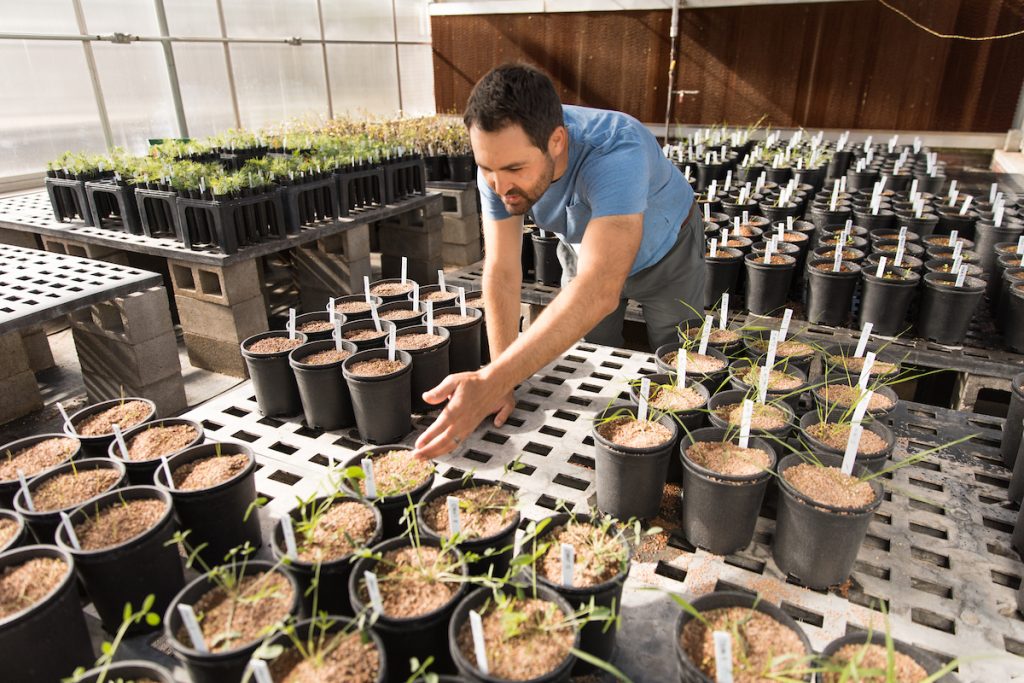By Kerry Bennett
Office of the Vice President for Research
After a wildfire or other event that destroys large areas of trees and other vegetation, land managers typically try to restore the land by planting seeds available through warehouses operated by the U.S. Department of the Interior’s Bureau of Land Management (BLM). The warehouses store millions of pounds of seeds chosen based on what the BLM predicts will be needed each year.
Failure is fairly common, however, when the BLM’s “one species fits all” seeds are used to restore highly specialized ecosystems such as the Colorado Plateau. Seeds fail to germinate for a variety of reasons, including lack of moisture and nutrients.
Northern Arizona University assistant research professor Brad Butterfield is working to change that. Butterfield, with the Merriam-Powell Center for Environmental Research, recently received a $490,000 award for a collaborative project between NAU and the BLM’s Colorado Plateau Native Plants Program.
To carry out the project, titled “Integrated monitoring and seed testing to improve restoration outcomes on the Colorado Plateau,” Butterfield is developing a network of test sites—including several at different elevations on the Babbitt Ranches near Flagstaff—where he will grow a variety of native species. By conducting these tests, he will establish a strong scientific foundation for restoration and rehabilitation activities that will improve the ecological status of areas on the Colorado Plateau disturbed by drought, fire, overgrazing and oil and gas development.
“We hope to provide science to help guide land management actions,” Butterfield said.
The project will result in practical advice for land managers regarding the purchase and application of optimal seed mixes for local environmental conditions, and in targeting specific sets of ecosystem services, such as forage production, soil stabilization and nutrient retention.
“My research focuses on the intersection between processes that regulate biodiversity and the consequences of that diversity for ecosystem function, primarily in dryland ecosystems,” Butterfield said. “For me and my students, these projects are a lot of fun. They help us address some interesting science questions, develop clear applications and see the results of applying science to these restorations that are so critical to the basic support of human society.”
In addition to restoration ecology, Butterfield’s research interests include plant community ecology and biodiversity-ecosystem functioning. Butterfield and his colleagues at the Merriam-Powell Center’s Restoration Assessment and Monitoring Program for the Southwest are expanding this work beyond the Colorado Plateau to the Great Basin and the Sonoran and Mohave deserts



